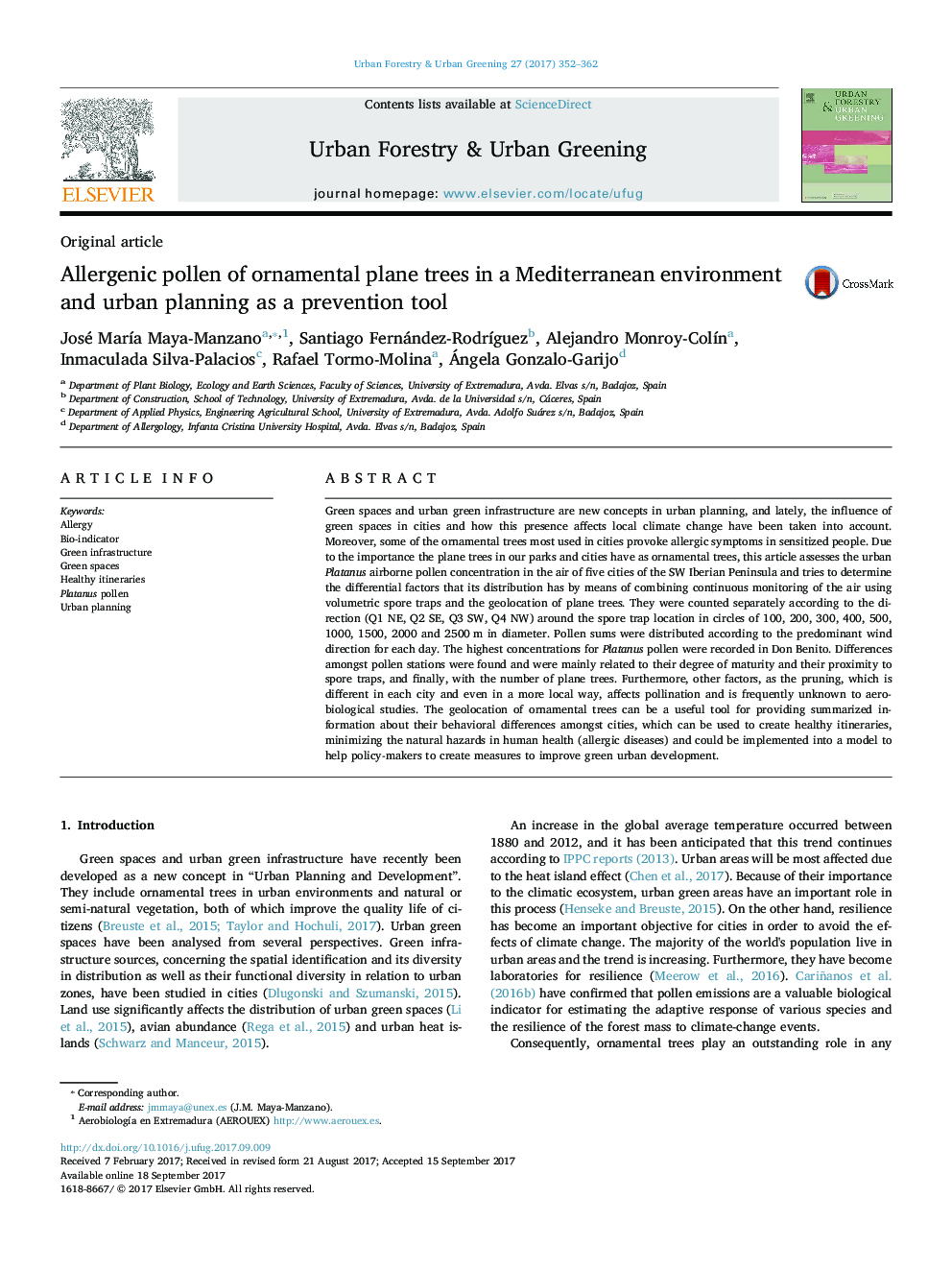| کد مقاله | کد نشریه | سال انتشار | مقاله انگلیسی | نسخه تمام متن |
|---|---|---|---|---|
| 6461781 | 1421863 | 2017 | 11 صفحه PDF | دانلود رایگان |
- Geolocation of ornamental plane trees can improve the urban green development.
- Platanus pollen content depends on maturity degree and closeness to sample sites.
- Differences in pollen sources distribution for each city must be studied separately.
- Mapping sources helps to detect local patterns in the pollen release from plane trees.
- This information about ornamental trees could be implemented for healthy itineraries.
Green spaces and urban green infrastructure are new concepts in urban planning, and lately, the influence of green spaces in cities and how this presence affects local climate change have been taken into account. Moreover, some of the ornamental trees most used in cities provoke allergic symptoms in sensitized people. Due to the importance the plane trees in our parks and cities have as ornamental trees, this article assesses the urban Platanus airborne pollen concentration in the air of five cities of the SW Iberian Peninsula and tries to determine the differential factors that its distribution has by means of combining continuous monitoring of the air using volumetric spore traps and the geolocation of plane trees. They were counted separately according to the direction (Q1 NE, Q2 SE, Q3 SW, Q4 NW) around the spore trap location in circles of 100, 200, 300, 400, 500, 1000, 1500, 2000 and 2500Â m in diameter. Pollen sums were distributed according to the predominant wind direction for each day. The highest concentrations for Platanus pollen were recorded in Don Benito. Differences amongst pollen stations were found and were mainly related to their degree of maturity and their proximity to spore traps, and finally, with the number of plane trees. Furthermore, other factors, as the pruning, which is different in each city and even in a more local way, affects pollination and is frequently unknown to aerobiological studies. The geolocation of ornamental trees can be a useful tool for providing summarized information about their behavioral differences amongst cities, which can be used to create healthy itineraries, minimizing the natural hazards in human health (allergic diseases) and could be implemented into a model to help policy-makers to create measures to improve green urban development.
Journal: Urban Forestry & Urban Greening - Volume 27, October 2017, Pages 352-362
